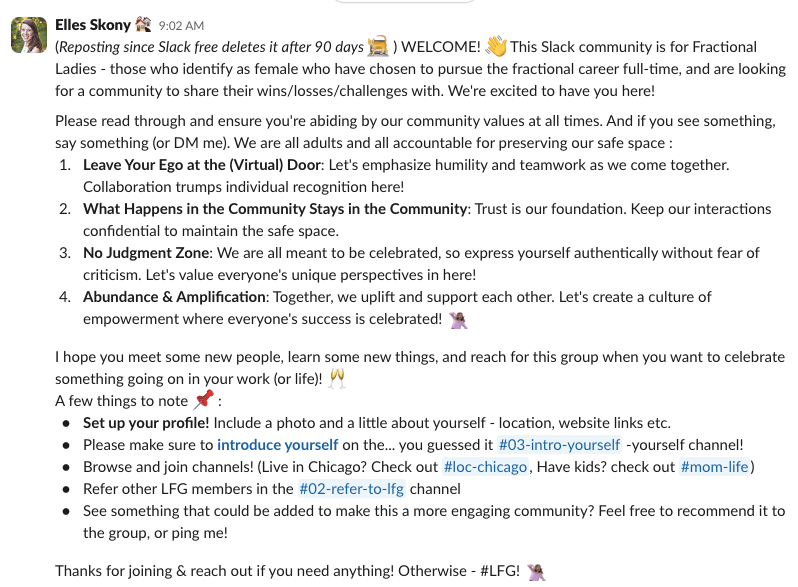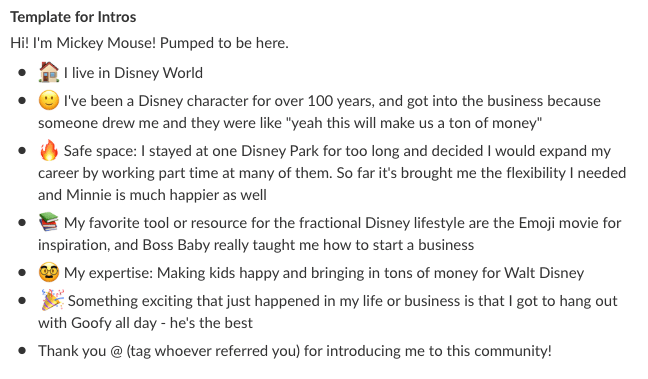Hi friends! I hope you enjoyed the first of a four part masterclass on community last week. 🧑🎓
Elles started off by convincing us that building trust is a growth strategy…and honestly, I couldn’t agree more.
I’ve often said sales happen when Trust + Timing + Need converge. And community helps you find yourself at the center of those 3 circles more frequently.
BUT as she warned us…your intentions also matter.
The best communities are built with a giver first mindset focused on adding value - not just extracting it.
And speaking of trust…if you decide to invest in building a community, you have to TRUST the process. Trust that by intentionally creating a valuable space for relationships and progress to blossom - organically - sales will follow.
Part 2 - let’s go!
How to set a community up for relationship-driven success
If you’re going to build a space where trust and connection thrive, you have to design it that way from the beginning. Community isn’t something you “launch.” It’s something you host — like a good dinner party.
Here’s how to set the table so people want to stay, engage, and come back:
1. Start with purpose, not platform
The first question isn’t “Should I use Slack or Circle?” It’s “What kind of connection do I want to foster?”
Is this a space for learning?
For referrals?
For peer support?
For professional networking?
Be crystal clear on what kind of conversations you want people to have inside the space — and why it matters.
2. Curate with intention
The people in the space shape the experience. Invite folks who:
Have something meaningful in common (role, values, goals, stage of life)
Will benefit from knowing each other
Will add value to others in return
Community breaks when it’s filled with misaligned people — or worse, people who don’t know why they’re there.
3. Set expectations early and often
If you want people to participate, you have to tell them how.
What’s the vibe?
What’s okay and not okay?
How often should they check in?
Is this professional, personal, or both?
Spell it out. People feel safer when they know what’s expected. 👇

4. Lower the barrier to first engagement
Don’t start with a 60-minute onboarding webinar. Start with:
A single intro question
A casual welcome event
A personal note saying, “Here’s what we’re doing — want in?”
Make it easy to show up. And celebrate when they do.
Example:

5. Don’t over-engineer it
You don’t need to run programming every day. Try this instead:
One thoughtful post a week
One community call a month
One prompt that gets people talking
Simplicity wins — especially when you’re just getting started.
6. Protect the experience
If someone starts pitching or being disrespectful, handle it. Quietly and clearly. People only open up when they feel safe — and that’s your responsibility as the host.
Be the kind of host who makes people feel seen, who models the energy you want to attract, and who sets a clear tone for how the space should feel.
In Part 3, we’ll dig into how to set up your community for sustainable success, with the right intentions from the start.
Need help designing a lightweight, relationship-first community? I offer strategy calls to help founders and teams get started. Let’s chat!
See ya next week.
Elles Skony

Want to learn more about how I help startups increase their revenue by 150-590%? 👀
Know someone who could benefit from being added to this distribution? Send them here to sign up!
With love and gratitude,


